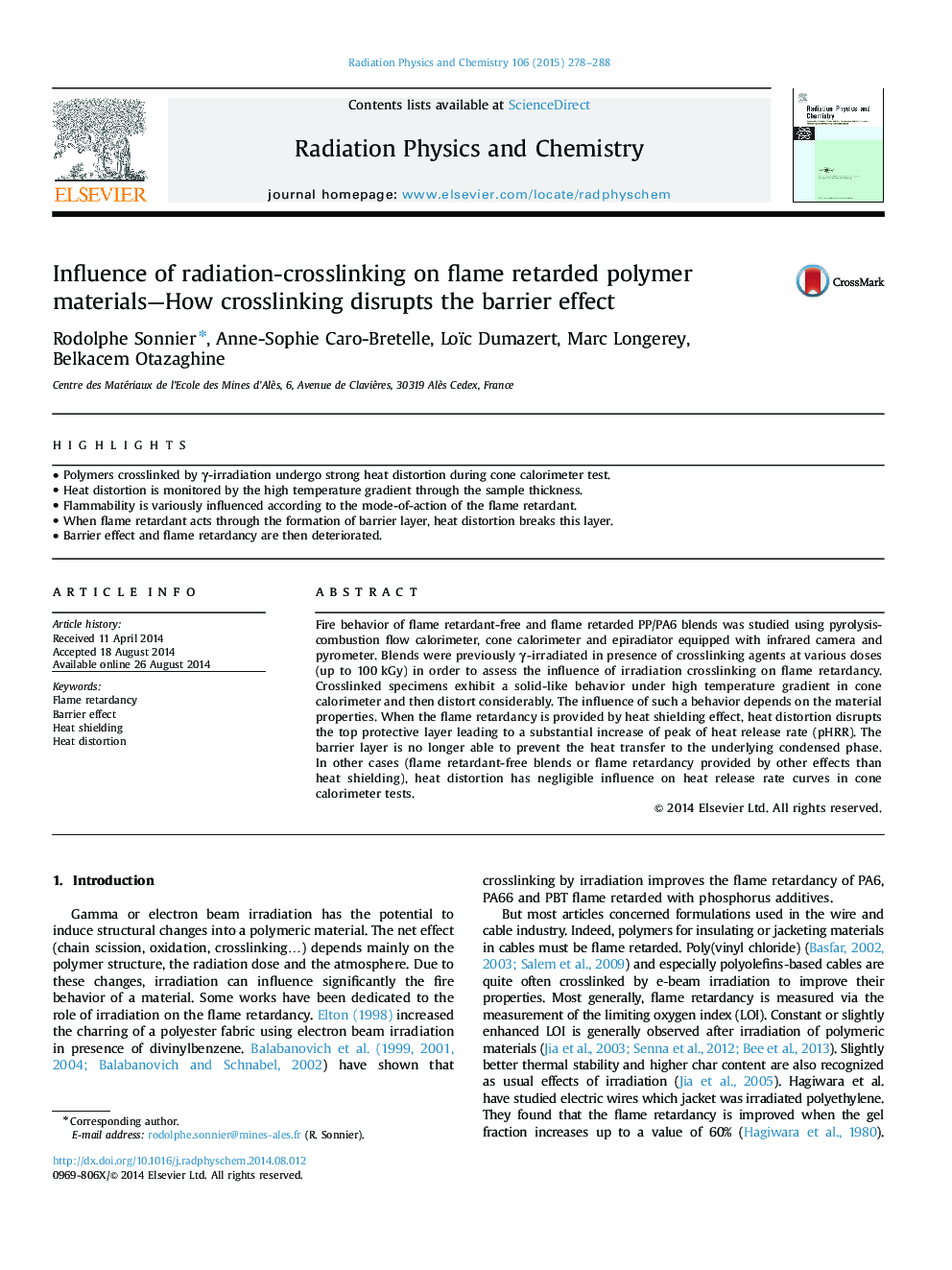| Article ID | Journal | Published Year | Pages | File Type |
|---|---|---|---|---|
| 1885997 | Radiation Physics and Chemistry | 2015 | 11 Pages |
•Polymers crosslinked by γ-irradiation undergo strong heat distortion during cone calorimeter test.•Heat distortion is monitored by the high temperature gradient through the sample thickness.•Flammability is variously influenced according to the mode-of-action of the flame retardant.•When flame retardant acts through the formation of barrier layer, heat distortion breaks this layer.•Barrier effect and flame retardancy are then deteriorated.
Fire behavior of flame retardant-free and flame retarded PP/PA6 blends was studied using pyrolysis-combustion flow calorimeter, cone calorimeter and epiradiator equipped with infrared camera and pyrometer. Blends were previously γ-irradiated in presence of crosslinking agents at various doses (up to 100 kGy) in order to assess the influence of irradiation crosslinking on flame retardancy. Crosslinked specimens exhibit a solid-like behavior under high temperature gradient in cone calorimeter and then distort considerably. The influence of such a behavior depends on the material properties. When the flame retardancy is provided by heat shielding effect, heat distortion disrupts the top protective layer leading to a substantial increase of peak of heat release rate (pHRR). The barrier layer is no longer able to prevent the heat transfer to the underlying condensed phase. In other cases (flame retardant-free blends or flame retardancy provided by other effects than heat shielding), heat distortion has negligible influence on heat release rate curves in cone calorimeter tests.
